|
|
|
|

Shimizu Bank
|
|

Entrance to Urakuen GardenThis garden has a few tea houses including one called Jo-an, a National Treasure. THe garden is close to Inuyama Castle and worth a visit. Admission 1,000 yen.
有楽苑
営業時間 9:00〜17:00(3/1〜7/14 ・ 9/1〜11/30)
9:00〜18:00(7/15〜8/31)
9:00〜16:00(12/1〜2/末日)
休日 無休 入場料 大人1,000円(呈茶別500円)
〒484−0081
愛知県犬山市御門先1
TEL 0568(61)4608
交通 名鉄犬山線犬山遊園下車徒歩7分
|
|

Kura-zukuri style architecture. Local merchants built these earthen buildings after the Great Fire of Kawagoe in 1893. 蔵造りの町並み
|
|

Public phone
|
|

Kyoto Tower at night.
|
|

Local fire station designed like a float.
|
|

Tavern
|
|

Sento public bath with a temple architectureNamed Kodara-yu.
|
|

It says, "Don't open the faucet. Water might flow."
|
|

Inuyama International Sightseeing Center "Freude"
|
|

Fireman's watch tower
|
|

Police box at Manseibashi in Tokyo
|
|

Seto Ohashi Bridge under construction in 1986, Kurashiki.
|
|

Seto Ohashi Bridge under construction in 1986, Kurashiki. 瀬戸大橋
|
|
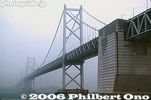
Foggy Seto Ohashi Bridge at Sakaide
|
|
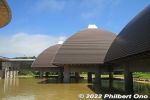
Isson Tanaka Museum is an art museum showing his paintings. Isson Tanaka (1908–1977) was a painter from Tokyo who moved to Amami at age 50. Photography inside the museum is not allowed. 田中一村記念美術館Isson lived on Amami from 1958 until his death in 1977. He painted Amami's flora and fauna. The museum has about 450 of his works and displays about 80 of them at a time. Museum buildings resemble the local Takakura storehouse for grains. Amami-Oshima, Kagoshima.
|
|
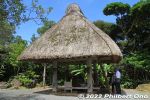
Takakura storehouse with a steep thatched roof. Amami's traditional structure for storing grains. Oshima tsumugimura, Amami Oshima, Kagoshima. 奄美の高倉
|
|
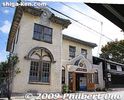
Former Hachiman Post Office in Omi-Hachiman, designed by William Merrell Vories. Built in 1921 and served as a post office until 1960. MAP
|
|

The Hyde Memorial Building was built in 1931 to serve as Seiyuen Kindergarten run by Hitotsuyanagi Makiko, Vories' wife from 1919. MAP
|
|

The construction of the kindergarten building was financed by the wife of Albert Alexander Hyde, the founder of The Mentholatum Company. This building was thus named after Hyde.
|
|

Next was the Andrews Memorial Hall, the first building designed by William Merrell Vories. It was formerly the Hachiman YMCA. アンドリュース記念館(旧八幡YMCA会館)
|
|

Next to the Andrews Memorial Hall is the Hachiman Church built in 1983. The original church, which was lost in a fire, was designed by William Merrell Vories in 1924. 八幡教会
|
|

Hachiman Commercial High School designed by William Merrell Vories in 1935. 八幡商業高等学校 MAP
|
|

This local municipal museum was originally the Hachiman Police Department built in 1886. In 1953, it was renovated by Vories and continued to house the Omi-Hachiman Police Department. In 1974, it was converted to the museum it is today. 近江八幡市立
|
|

Imazu Vories Museum in Imazu, Takashima, a former bank building designed by William Merrell Vories. Now a coffee shop and exhibition space. MAP
|
|
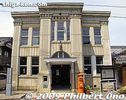
Samegai Museum in a former post office designed by William Merrell Vories, in Samegai, Maibara, Shiga Pref. MAP
|
|

Former Minakuchi Public Library designed by William Vories and built in 1928. It is next to Minakuchi Elementary School in Koka. 旧水口図書館 MAP
|
|

Inside former Minakuchi Public Library. Now it is sometimes used as an art gallery.
|
|

Toyosato Elementary School was renovated and reopened in May 2009.
|
|

Tokyo Tower
|
|

Tokyo Tower in its Diamond Veil illumination.
|
|

Tokyo Tower and Somon Gate, the front gate of the Taitoku-in mausoleum (lost in World War II air raids) for Tokugawa Hidetada. 台徳院霊廟惣門
|
|

Nippon Budokan is Japan's most famous and prestigious martial arts hall in the grounds of the Imperial Palace. It was built for the 1964 Tokyo Olympics.The Budokan was where the Beatles played in 1966, the first band to play there. The acoustics are not that good for concerts though. Playing at the Budokan is a hallmark of a bonafide rock star in Japan.
|
|
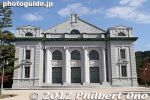
Ceremonial Hall. Built in 1917 and designed for holding ceremonies and moral education. One of the few buildings which we could enter. Etajima, Hiroshima.
|
|
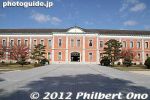
The academy's most distinctive building is this Students’ Hall dubbed the "Red Brick Building." We weren't allowed to go inside. Etajima, Hiroshima.
|
|
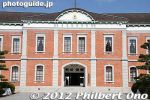
Built in 1893 and used for classrooms and living quarters for students. Today, it is part of the Officer Candidate School and used as classrooms and students' living quarters. Etajima, Hiroshima.
|
|
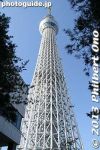
Finally went up Tokyo Skytree for the first time in Sept. 2013. I waited for a clear weekday and went early in the morning.
|
|
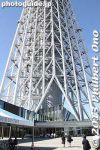
You can either buy a ticket at the door or buy a reserved ticket for a specific day via their Website. Visiting Tokyo Skytree on snowy days can be dangerous. Clumps of snow clinging to the struts are known to fall to the ground.
|
|
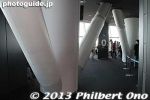
The exposed struts inside the observation deck are padded so you don't crack your head when you bump into it. Lonely people who don't have anyone to hug could hug one of these. It's soft enough.
|
|

The higher observation deck called Tembo Galleria has a unique design with a spiraling walkway called the Skywalk.
|
|
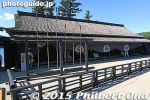
At Hakone-machi on the shore of Lake Ashi, a fantastic reconstruction of the Hakone Sekisho Checkpoint. This is the main office. After years of research, excavations, and construction, the reconstruction was finally completed in 2007 based on accurate records of the major buildings. The reconstructed buildings were built on the exact spot of the original sekisho buildings.
|
|
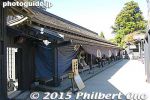
Main office of Hakone Sekisho
|
|
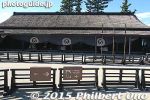
Main office of Hakone Sekisho
|
|
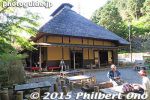
Amasake Chaya, a teahouse for travelers in Hakone. There is a bus stop in front of this teahouse.
|
|

Former Hokkaido Government Office Building and tulips, Sapporo
|
|
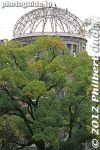
Hiroshima Atom Bomb Dome
|
|
|
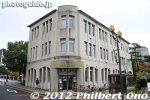
Another building that survived the atom bomb. Now a rest house and tourist information center. Hiroshima.
|
|

Imazu also has a few buildings designed by William Merrell Vories like this former bank building in Imazu, Shiga Now a coffee shop and exhibition space. MAP
|
|
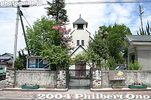
Imazu Church, designed by William Merrell Vories. Next to the former bank building also designed by Vories.
|
|
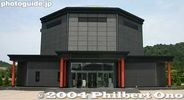
House of Nobunaga (Nobunaga no Yakata). A replica of the top (best) part of Azuchi Castle is displayed inside. See this album to see what's inside. MAP
|
|

Old Ryugen Gakko school. First built in 1876 as a primary school in Takashima, northern Shiga, this is the prefecture's oldest surviving school building. It was moved here for display. 旧柳原学校旧柳原学校
|
|

Police box in front of Azuchi Station
|
|

Sumo ring near Azuchi Station. It was built in 1988 and once used for a exhibition sumo tournament. It was removed in late 2014 due to a redevelopment of this train station area.
|
|
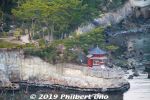
In Kita-Ibaraki, Tenshin used Rokkakudo to listen to ocean waves and gaze at the scenery. On March 11, 2011, it was washed away by the tsunami, but it was rebuilt in 2012.
|
|
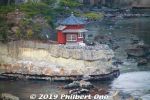
Izura Rokkakudo (五浦六角堂) is now being maintained by Ibaraki University and it continues to be a sacred spot for Japanese artists.
|
|
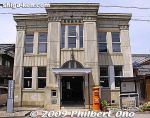
Samegai Museum in a former post office designed by William Merrell Vories, Samegai, Shiga Pref. 旧醒井郵便局局舎 MAP
|
|
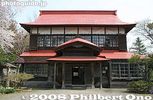
Geihinkan Guesthouse in Date Rekishi no Mori park, Hokkaido. Two-story wooden structure built in 1892 during the Meiji Period. 迎賓館
|
|
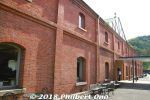
Opened in 2012, Maizuru Brick Park is a complex of 12 large brick buildings near the Japanese navy base. They were built from 1901 until the 1920s to store munitions (arsenal) for the Imperial Japanese Navy. Eight of the buildings are National Important Cultural Properties and a few of them have been renovated and opened to the public. This is the first building you enter, the Maizuru World Brick Museum (赤れんが博物館).
Hours 9:00 am–5:00 pm, closed Dec. 29–Jan. 1. 15-min. walk from JR Higashi-Maizuru Station (JR Maizuru Line and Obama Line). Parking available.
Map: https://goo.gl/maps/ZuFd1eXrNds
|
|
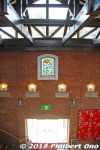
Inside the huge Maizuru World Brick Museum.
|
|
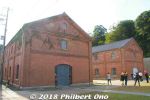
These brick buildings are not open to the public.Maizuru Brick Park, Kyoto Prefecture.
|
|

Inside Brick Building No. 5 (赤れんが5号棟), the park's largest building. Built in 1918 to store torpedoes, depth charges, and mines. After the war, it was used by a warehouse company.Now used as an event hall and cafe space (cafe open only on weekends). It can be rented to hold exhibitions or events (concerts, weddings, etc.). It has been reinforced with these steel girders for earthquake resistance. National Important Cultural Property.
|
|
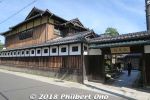
Shoeikan was originally the annex (別館) of the Shoeikan ryokan inn opened in 1904 (Meiji 37). The inn was built for navy VIPs like Admiral Heihachiro Togo who led the Japanese navy during the Russo-Japanese War.Hours
Lunch: 11:30–14:30 Dinner: 17:30–21:30
About 1 km from JR Higashi Maizuru Station. Parking available.
Map: https://goo.gl/maps/sQd8ZdekJqA2
|
|
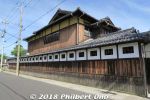
The ryokan's annex building was left unused and decrepit for many years and was on the verge of being torn down until a citizens group got together to clean, renovate, and preserve the building. They finally decided to make it a Western-style restaurant serving navy cuisine. It just opened on Oct. 11, 2018. Glad that they preserved the building.
|
|
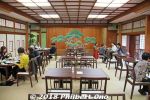
The 1st floor is the main dining room. It even has a Noh stage.
|
|
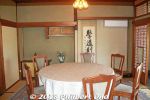
Private dining room at Shoeikan.
|
|

Shishinden Hall is the most important building at Kyoto Imperial Palace. In houses the emperor's throne called Takamikura looking like an alcove. The enthronement ceremony for Emperor Taisho and Showa were held here.
|
|

Shishinden Hall, the most important building at Kyoto Imperial Palace. It faces a plaza of grooved, white gravel. 紫宸殿
|
|
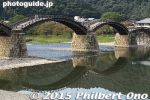
Kintaikyo in Iwakuni, Yamaguchi
|
|
|
|

Even the police box (koban) near the Kaminoyama Onsen train station is designed after the castle.
|
|
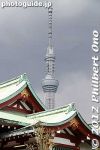
Kameido Tenjin Shrine and Tokyo Sky Tree.
|
|
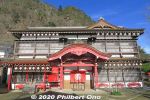
At Edo Wonderland in Nikko, Tochigi, Wakamatsu-ya Theater in a Yoshiwara brothel style building. It holds oiran shows, one of the park's major attractions. 若松屋
|
|

A symbol of Kobe, Kobe Port Tower is 108 meters high, designed like the tsuzumi taiko shoulder drum.
|
|

Kobe Port Tower
|
|

Bottom of Kobe Port Tower.
|
|

Phone booth at Nankinmachi, Kobe's Chinatown.
|
|

The main Shirakabe kura storehouses in Kurayoshi, Tottori. 赤瓦二号館
|
|

The main Shirakabe kura storehouse in Kurayoshi, Tottori. 赤瓦二号館
|
|

Police box in front of JR Kurayoshi Station.
|
|

Fudoki-no-Oka Okadayama tumulus, Matsue 風土記の丘
|
|

Saiku Heian-no-mori Park recreates one of the many rectangular blocks of the Saiku Palace area. This one reconstructs three buildings used by the head of the Saikuryo, the government office of the Saiku Palace. The left building is the Nishiwakiden, center is Seiden (main building), and right building is the Higashiwakiden. The buildings are only approximations of what they actually looked like. Only the size could be determined from pillar holes, but not the actual apperance. This is where the Saio Matsuri festival's Departure Ceremony is held.
|
|

This main building is the Seiden dating from the 9th century used to conduct important ceremonies by the head of the Saikuryo and to welcome official messengers from Ise Grand Shrines and Kyoto.Normally open to the public, free admission. 正殿
|
|
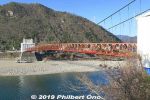
Built in 1916, Mino Bridge is Japan's oldest surviving modern bridge and a National Important Cultural Property. It's now a pedestrian and bicycle bridge 113 meters long. 美濃橋
|
|
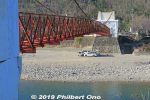
Mino Bridge over Nagara River. It has a wooden floor. It's being renovated so we couldn't cross it in Jan. 2019. Jumping off this bridge into the river can be fatal. 美濃橋
|
|

Yomeien Garden, Adogawa, Shiga 陽明園 MAP
|
|

Near the station is Nagoya City Hall (Shiyakusho) which also sports a castle motif.
|
|

Ryukoku University
|
|
|
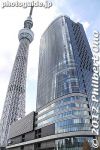
Tokyo Skytree
|
|
|
|
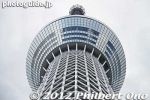
Lower lookout deck.
|
|

Sorihashi Bridge (反橋) is a symbol of the shrine and one of the larger taikobashi.
|
|
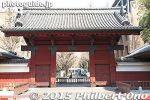
Akamon Gate is the symbol of University of Tokyo's Hongo Campus. A remnant of the Maeda Clan's estate here. 赤門
|
|
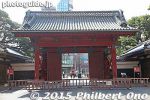
Back of Akamon Gate.
|
|
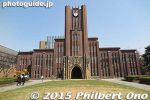
Yasuda Hall is another symbol of University of Tokyo. 安田講堂
|
|

Caban Street's most prominent bag shop is this one called Artisan Avenue. The front has a woven basket motif. Toyooka, Hyogo Prefecture.
|
|

Shinkoro Clock Tower in Izushi, Toyooka, Hyogo Prefecture is one of Japan's oldest clock towers along with the Sapporo Clock Tower also built in 1881. 辰鼓楼
|
|

Shinkoro Clock Tower was orignally used to beat taiko drums from 7 am to 9 am to notify people that the castle lord arrived at the castle. A mechanical clock from the Netherlands was later donated by a local doctor to make it a clock tower in 1881. 辰鼓
|
|

Eirakukan (永楽館), the Kansai Region's oldest kabuki theater built in 1901. Toward the left was the theater's front entrance that is not used anymore because of the road right in front. They now use a side entrance.
|
|

Eirakukan Theater in Izushi, Toyooka, Hyogo.
|
|

Eirakukan's rotating kabuki stage.
|
|

You can also go underneath the stage and see the revolving stage. It's rotated by hand. Wow neat, how often can you see something like this?
|
|

Yanagi-yu public bath in Kinosaki Onsen, Toyooka, Hyogo. "Yanagi" means willow tree. The third public bath I've seen (but didn't enter). Open 3:00 pm–11:00 pm, closed. Thu. 柳湯
|
|

Ichinoyu, perhaps the most famous public bath in Kinosaki Onsen. Looks like a kabuki theater. 一の湯Toyooka, Hyogo Prefecture.
|
|

Gosho-no-yu public bath in Kinosaki Onsen, Toyooka, Hyogo. Looks palatial. (御所の湯).
|
|

Bus stop shelter near Kou-no-Yu in Kinosaki Onsen, Toyooka, Hyogo.
|
|

Building 1 at University of Tokyo, Komaba Campus. The most distinguished-looking building on campus. Looks like the Yasuda Auditorium on the Hongo Campus. 1号館
|
|

Another traditional-looking building is this Building 101. Univ.of Tokyo, Komaba Campus
|
|

Komaba Museum is open to the public. Free admission. This was the former university library.
|
|

Eitaibashi Bridge spans over the Sumida Bridge. Lit up in blue at night.
|
|

Eitaibashi Bridge spans over the Sumida Bridge. Lit up in blue at night.
|
|
|
|
|
|